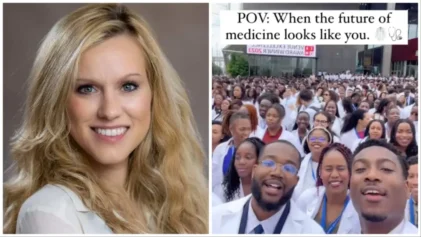
Ribbon-cutting of the new CCCADI home in Harlem. Image by Rex Desrosiers, courtesy of CCCADI.
New York has a triumphant new space dedicated to global Black culture. Last night, the 40-year-old Caribbean Cultural Center African Diaspora Institute (CCCADI) reopened in a disused firehouse near the borderland between East and West Harlem, a few blocks from Marcus Garvey Park. It adds one more space to the city’s tiny roster of cultural institutions dedicated to communities of color, and joins the neighborhood’s Studio Museum and El Museo del Barrio by putting down roots in a region with a long and rich history of African-American and Latino cultures.
It’s a small and intimate space, but one that represents an enormous achievement and far-reaching implications — and it’s a project that has been some nine years in the making.
“We are here, in El Barrio, can you hear me Harlem?” Nyoka Acevedo, a board member, called out to a packed crowd just hours after the institution’s ribbon-cutting, which was attended by New York City’s Commissioner of Cultural Affairs, Tom Finkelpearl, the First Lady of New York City, Chirlane McCray, and numerous other officials who have helped to secure a permanent home for the institution, and to amass $9.3 million (a combination of tax-payer money and individual donations) for its renovation.
“Here we stand, in our home, in Harlem, in this landmark building, one of the few institutions of color to have a landmark building in the city.”

Rendering of the new CCCADI home in Harlem. Image courtesy of CCCADI
The significance of the moment was not lost on anyone in the room. The arrival of CCCADI in Harlem marks the end of the institution’s odyssey through three different spaces, beginning in a building in the East 80s in 1976, before moving to 58th and 9th, and now East Harlem.
“The process has been a difficult one,” the institution’s firebrand founder and former El Museo director Dr. Marta Moreno-Vega, who is Afro-Puerto Rican, said over the phone a week before the opening.
Difficult, she explained, “because having people invest in an idea that addresses the articulation of a vision that is anti-racism, anti-discrimination, and pro-African and African Diaspora cultures, is one that even for our own is not always embraced. The whole notion that you’re building an institution to a vision of liberation is one that is hard to grasp, and we were fortunate to get people who understood and invested in different ways, and now we’re here.”
Read more here.


